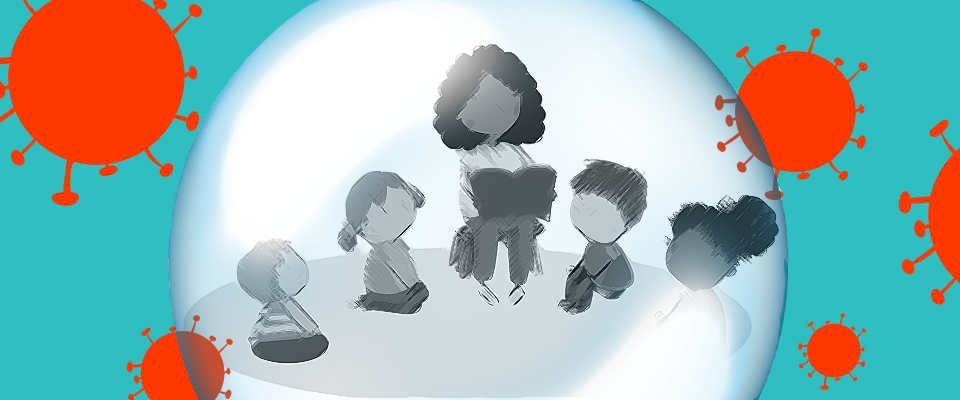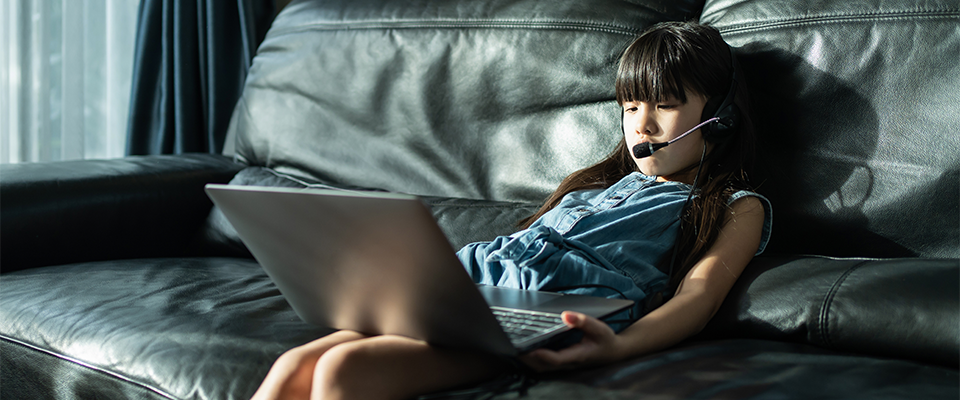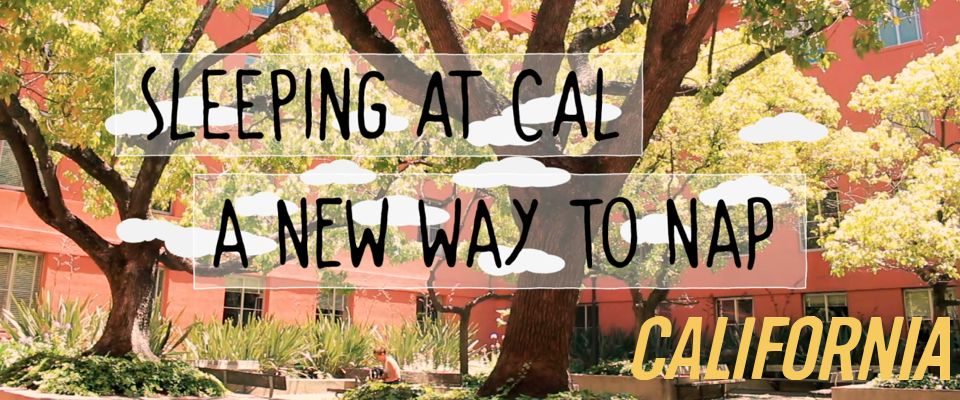Ever since Bay Area school districts announced they would begin the fall 2020 school year with distance learning due to the still-increasing rate of COVID-19 infection across the region, parents have been scrambling to figure out how to manage their children’s schooling. One solution many are considering is “pandemic pods,” small learning groups organized by parents who want or need to team up to make distance learning feasible.
Parents’ reasons for forming or joining pods are varied: some work outside the home and can’t leave their children home alone yet, others work remotely and can’t dedicate the time to supervising school, and yet others are worried about the very real adverse mental health effects of prolonged social isolation on their kids. However, pods have been fiercely debated in the past month as many point out the ways they threaten to widen the racial equity gap within K-12 education. Around the Bay, middle-class and wealthy parents are hiring private tutors or teachers to assist their children with distance learning, a privilege many public school parents—particularly Black, brown, and Indigenous families—don’t have.

Janelle Scott is a professor in the Graduate School of Education and African American Studies Department who holds the Robert C. and Mary Catherine Birgeneau Distinguished Chair in Educational Disparities. Her research focuses on the racial politics of public education, the politics of school choice, and privatization. She spoke to California about the race and class implications of distance learning and the formation of pandemic pods—and the burden this entails for mothers especially.
This conversation has been edited for length and clarity.
So I thought I would start out by getting your take on the race and class implications of school closures and distance learning.
Janelle Scott: I think there certainly are going to be differences in the same way that there were differences before the pandemic. Obviously, the pandemic has amplified some of those and in some ways deeply worsened some of them. We’ve gone from being in emergency mode and trying to deliver virtual schooling in a crisis to a summer in which I think a lot of school districts and other schooling arrangements have been trying to regroup, even as we’re dealing with a still-fluid crisis.
I think those are incredible challenges institutionally: the fact that the federal government failed to develop a rigorous program of testing and tracing—that has proven successful in every nation that’s gotten the hang of things. These are conditions that put schools and their ability to open and serve children across race and class at a deep disadvantage. And now schools are being told to reopen or lose federal funding, and that certainly stands to affect children by race and class, if it’s actually enacted. Schools just aren’t ready. The infrastructure schools would need to open safely, given where we are with the virus, we’re just not there.
What do you think are the biggest risks of school closures/distance learning in terms of the achievement gap, as well as the health and well-being of students?
JS: The data on virtual online schooling in terms of effectiveness is pretty dismal. Where the data seem to be more favorable is when it’s used as a supplement to face-to-face instruction, but not as a replacement. For the most part, face-to-face learning seems to be superior for cognitive development. We learn in community, we learn through interaction, children learn through play, all these things are cut off from them. A lot of children are going to be in virtual schooling situations with teachers they haven’t met, whereas in the spring teachers had already established routines and classroom discourse practices. We know particular age groups are much harder to teach virtually: K-3; some would say K-5. So it’s hard to answer consequentially about the kind of inequalities that we’re going to see emerge because they’re so layered by child development, adolescent development, race, class, gender, ability.
In some ways, I feel even silly talking about it because it’s such a mess. I wish I could say something really smart about it—and I don’t want to scare anyone or be alarmist and I have no inside information to this fact—but if we continue in terms of the progress with the pandemic the way we have, I don’t see how school is going back at all this year in-person.
In terms of the kinds of physical upgrades that schools would need, the kind of money it would take to hire enough teachers to do this safely in person, there needs to be a mass infusion of resources, and those resources should be targeted to the kids who have been the least well-served. I think it’s going to be especially terrible for the people for whom it’s always been terrible. And, I would be remiss to not say that I think teachers and schools are doing the best they can. I don’t expect that fall will look like spring in terms of quality because there’s been a bit more time to plan and to innovate.
The whole “pandemic pod” idea is being hotly debated right now. Do you have an opinion on whether these pods are a good or bad idea?
JS: I don’t. I’m too much of an academic to see anything in a binary [laughs]. There are pretty obvious concerns about the idea of going into micro-communities to solve complex social problems. In the United States, people’s friendship networks tend to be racially homogenous. There’s a study that found that [75 percent] of white people’s friendship networks were with other white people. So, the fact that we live segregated according to race and social class means any kind of micro-community we form is also going to be generally segregated. On the other hand, I think people fall to mutual aid solutions across the socio-economic and racial divides. I wish we were as focused on what working-class and poor people were doing during shelter in place in the spring because many of them were essential workers or hourly wage employees or gig economy employees where they needed to figure out what to do vis-a-vis schooling and childcare. So I think the equity issues of the pods are super important, but we’re missing an opportunity to understand how people have used mutual aid to navigate a situation that nobody wanted.
The part that’s concerning is public school parents who are electing to pull their kids from public school and create these communities in lieu of public education, so essentially forming small private schools. That could hurt all kids because it hurts public education in terms of state funding. And then there’s the private tutors or private teacher model, what people are kind of calling the “governess model.”
There are a lot of Sound of Music jokes these days about looking for a Maria von Trapp to traipse through the streets with a guitar and your children. It appears to be wealthy white women that are the face of the pod right now. And so I think it’s garnered a lot of sensationalist interest. But there are also upper-middle class and middle-class Black, Latinx, Asian, and Indigenous women participating. So, I do worry about the white racializing of it.
It’s really more about class and who has the resources to provide their kids with a good alternative.
JS: I think so. And the kind of social segregation that we experience in face-to-face life is going to be replicated in these other domains. So often in media depictions, Black and Latinx people are associated with poverty. And often that’s the case, but it’s not always.
The other thing for me is the assumption that these pods are going to be good. I’m not totally convinced they will, even with all the privilege that might be going into that. They’re highly dependent on who’s facilitating them. So is it going to be a cooperative model where you all take turns? What if it turns out, this good friend you have, you think she’s terrible as a teacher? Do you kick her out of the pod? I think people are frantically planning and are not thinking this through.
One of the things that’s important about schooling, institutionally, is that there are regulations that you can enforce; and in a voluntary community, you just can’t. What we know about COVID is how mobile it is and how hard it is to contain. And so there is somewhat of a false sense of “bubbling safety” that might play out in very destructive ways. What happens if someone gets sick? Or, what do you do if you have a child in the pod who’s being disruptive? There are a lot of complexities that schools, although not perfect places, are set up to navigate. I’m not convinced that every exclusive pod community will be better than what might already exist through virtual delivery of schooling.
San Francisco Unified announced a few weeks ago that they’re going to be working with community-based organizations to offer pods where kids can come together to learn with SFUSD virtual schooling. I think districts are trying to figure out their own regulatory frameworks for what they can do to keep kids safe but also keep them in community with one another. I would expect to see more of that.
One of the things that has bothered me about some of the discourse around pods is how gendered it is, the fact that these these online communities are largely women panicking about what they’re going to do in order to stay in the workforce, whether it’s because their family needs the income or because they just have ambition—which you’re allowed to have! There’s some data from the Center for American Progress around childcare, that about two million people leave the workforce because of lack of childcare already, pre-COVID. Women are taking a big hit right now. So I do worry about the discourse around pods [being] just: rich women taking care of each other. We’re losing the fact that working women across all economic strata have to figure out how to make this work. The fact that there’s so few men seemingly a part of these conversations, a part of the planning for the fall, is part of a bigger problem of equity.
Do you think there are best practices for how parents can practice equity in forming a pod?
JS: There’s a lot out there by way of advice that I think is sound. But I also am sensitive to the fact that people are having to make plans in the midst of a crisis. I come back to some advice [from] one of my former professors at UCLA, Jeannie Oakes, who studied curriculum tracking in high school and the disparity in race and class. She often got this question from parents: What do I do if I know that it’s unequal? Is it better for me to have my kid in the low track? How do I participate in a way that doesn’t make me complicit? And Jeannie would say, “you need to know that the research is that if you are in higher track classrooms, your life and career outcomes are better.” So, she said, “your challenge, as someone who now knows about the equity issues, is yes, get your kid in the high track, and do whatever you can to get rid of tracking.” You have to do them simultaneously.
Okay, so you’re going to do a pod because you have to go to work, or maybe your kid is verging on a major depression from being socially isolated. So, do that but also work on getting CARES Act funding to schools, expend some energy on broader public policies that will help all children. There’s a Childcare Is Essential Act that was introduced in Congress in May that would greatly expand childcare. There’s the HEROES Act. There’s the California Schools and Communities First proposition on the ballot that would be a windfall for public education. So do your pod AND. Don’t do your pod and then forget about everybody else.
I think it’s difficult for individual middle-class parents to approach other parents who are outside their social network or who are marginalized or low-income. Leaving liability issues aside, would it be more equitable if the schools and/or PTSAs were involved in forming these pods?
JS: I think any kind of institutional intervention where someone can be thinking about all of the goals people have right now is good. So, equity’s a goal, quality is a goal, safety is a goal. Any kind of hub that can hold all those goals constant, and weigh the costs and benefits in a way that parents can’t, could be really helpful right now. Parents are focused on their kid.
I think people are making what they are finding the least worst choice. They’re all bad, so what’s the least worst one? Personally, I don’t have any plans to pod, but I’m a professor. I can teach online at home and it’s not a big deal for anyone. My husband for now is still able to work at home, his organization is not going back yet in-person. But I’m aware that the kind of flexibility I have in my day is not something that’s enjoyed by other people who can work at home.
I think the other glaring thing we haven’t talked about is—and I think why this has struck such a nerve is—the pod development comes after a summer of racial reckoning in which many white mothers who participated in these discourses declared their commitment to anti-racist parenting. Some of the critique is like: You said you were committed to anti-racist parenting. Here’s your first test. I think that’s why the focus has been so much on white women. Some people see this as a reckoning.





















